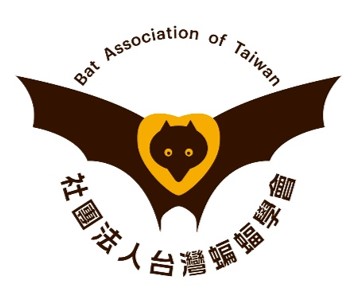蝙蝠研究
2004_台灣地區管鼻蝠屬蝙蝠的系統分類學研究(翼手目:蝙蝠科)_郭浩志
出版年份:2004
研究生:郭浩志
分類:碩士論文
題目:台灣地區管鼻蝠屬蝙蝠的系統分類學研究(翼手目:蝙蝠科)
Title:Systematics of bats of genus Murina in Taiwan (Chiroptera: Vespertilionidae)
摘要:
第一章 台灣地區管鼻蝠屬蝙蝠的分類學研究
本研究藉由比對、量測與分析74件台灣產管鼻蝠屬(包含subgenus Murina與subgenus Harpiola)蝙蝠標本的質化與量化特徵,確認台灣地區共有四種管鼻蝠屬的蝙蝠,包括台灣管鼻蝠(Murina puta)及三個新紀錄的物種。經比對台灣鄰近地區其他管鼻蝠屬之近似物種後,發現台灣管鼻蝠明顯近似於Murina huttoni,但本研究仍暫時將其視為有效種。三個新紀錄的物種包括一個新種—姬管鼻蝠(Murina gracilis)與兩個新亞種—金芒管鼻蝠(Murina grisea isodon)與黃胸管鼻蝠(Murina leucogaster bicolor)。其中Murina grisea是目前所知唯一屬於subgenus Harpiola的物種。由於subgenus Harpiola獨特的齒列特徵,本研究採用Harpiola自成一屬的分類方式,因此Murina grisea應更改為Harpiola grisea。本研究並整理台灣產管鼻蝠亞科五種蝙蝠,包含上述四種及毛翼蝠屬的毛翼大管鼻蝠(Harpiocephalus harpia)的形態特徵差異,提出分類的檢索表。
第二章 管鼻蝠亞科蝙蝠的系群演化學研究
本研究以細胞色素b與ND1兩段粒線體基因建構台灣產五種管鼻蝠亞科(Murininae)物種的系群演化樹。結果顯示五個種類的樣本在系群演化樹中各自形成具高度支持的單系群,且種間彼此區隔以偏高的遺傳距離。此外,姬管鼻蝠(Murina gracilis)的遺傳變異高於其他四種管鼻蝠亞科的物種,且姬管鼻蝠的樣本在系群演化樹中可區分為三群,即Type I之台灣東部群,Type I之台灣西部群,及Type II群。其中,Type I與Type II在形態特徵上的穩定區別顯示兩者可能代表不同的物種。此外,藉由加入較以往研究更多管鼻蝠亞科的物種,本研究亦利用上述兩段基因針對該亞科的系群演化進行分析。結果顯示管鼻蝠亞科為一單系群,而亞科內多數物種間遺傳距離的彼此接近,以及種間親緣關係僅獲得低度的支持,皆顯示其快速分歧的演化歷史。由於毛翼蝠屬(genus Harpiocephalus)、Harpiola屬與多數管鼻蝠屬(genus Murina)物種的分歧程度彼此接近,本研究建議將三個屬合併為同一屬,以Murina為屬名。此外,傳統形態分類中管鼻蝠屬下的兩個種群:Species Group I與Species Group II,在遺傳資料所建立的系群演化上並不具有相對應的分群。
Abstract:
Chapter 1: Taxonomy of bats of genus Murina in Taiwan
We examined variations in the morphological characters of 74 specimens of the genus Murina (including subgenera Murina and Harpiola) and concluded that four species occur in Taiwan. They are Murina puta and three new record species. We further compared each of these four species with similar species of genus Murina and concluded that M. puta is currently treated as a valid species, although it is morphologically very similar to Murina huttoni. The three new record species include a new species, Murina gracilis, and two new subspecies, Murina grisea isodon and Murina leucogaster bicolor. M. grisea was the only known species of subgenus Harpiola. Based on the unique dental characters of M. grisea, which are distinctively different from those of other Murina species, we suggested that Harpiola should be treated as a valid genus. Hence Murina grisea shoud be named as Harpiola grisea. Keys of the five species of subfamily Murininae in Taiwan, including the four species listed above and Harpiocephalus harpia, based on their morphological characters, were provided.
Chapter 2: The phylogenetic study of bats of subfamily Murininae
We constructed phylogenetic trees of five species of subfamily Murininae in Taiwan based on sequences of their cytochrome b and ND1 mitochondrial genes. Samples of each of these five species formed highly supported monophyletic groups and had long genetic distance between them. Furthermore, samples of Murina gracilis showed greater genetic variation than the other four species and could be divided into three well-supported groups in the phylogenetic trees, namely Type I group in eastern Taiwan, Type I group in western Taiwan and Type II group. Diagnosable differences in morphology between specimens of Type I and Type II groups implied that their divergence might be at specific level. Using the same two genes, we also examined the phylogeny of Murininae after adding more taxa than previous studies. The results indicated that taxa of Murininae form a monophyletic group. Within the subfamily, however, genetic distances between most species were similar and the support for the phylogenetic relationships among them was weak, which indicated that these species have experienced a period of rapid diversification in the past. We suggested that genera Murina, Harpiola and Harpiocephalus should be grouped into one genus, Murina, based on the similar level of divergence among species within the genus. Furthermore, the traditional subdivision of the genus Murina into two species groups, Species Group I and Species Group II, has no corresponding groupings in their phylogeny.
